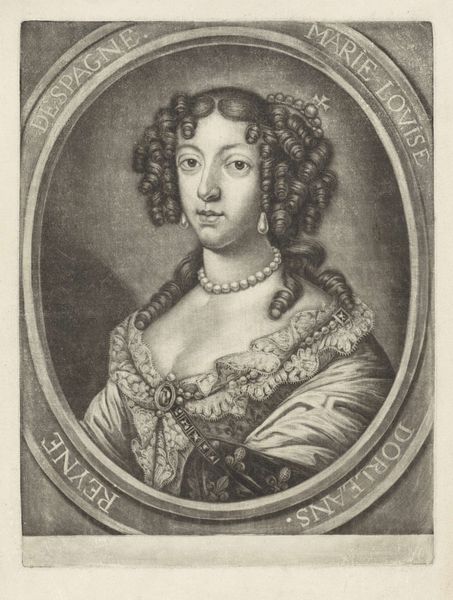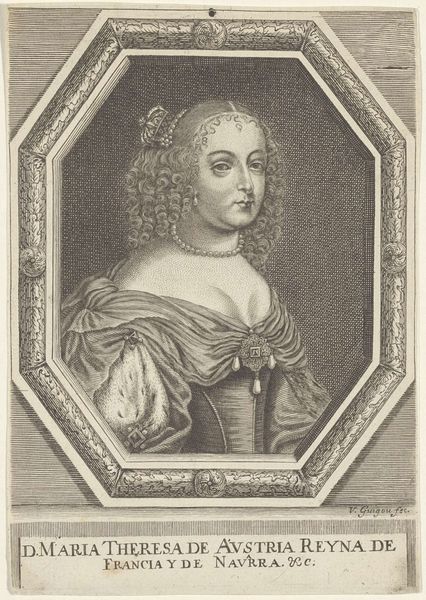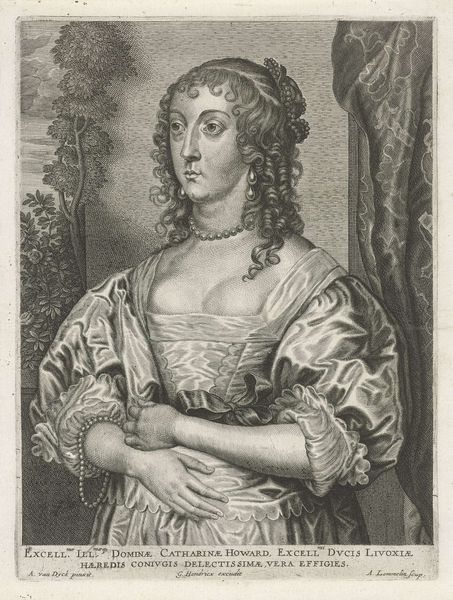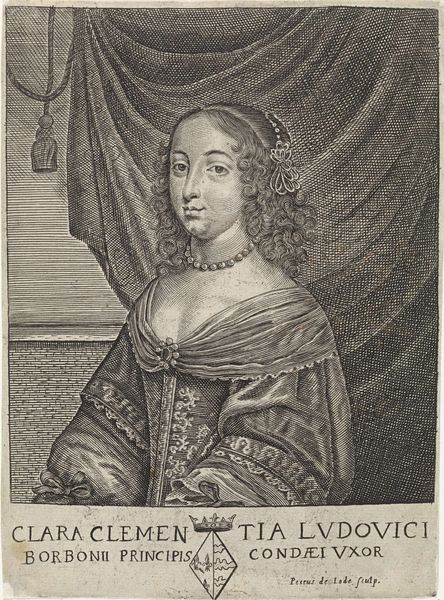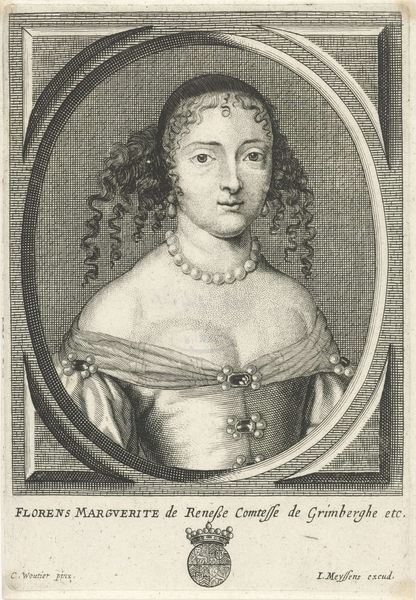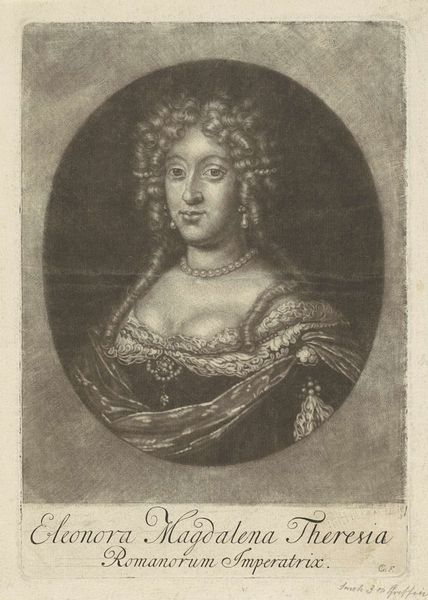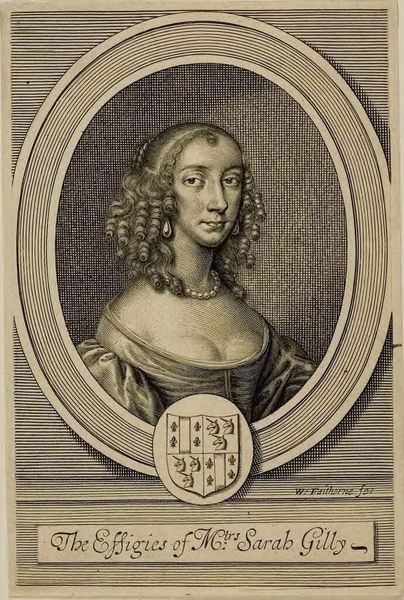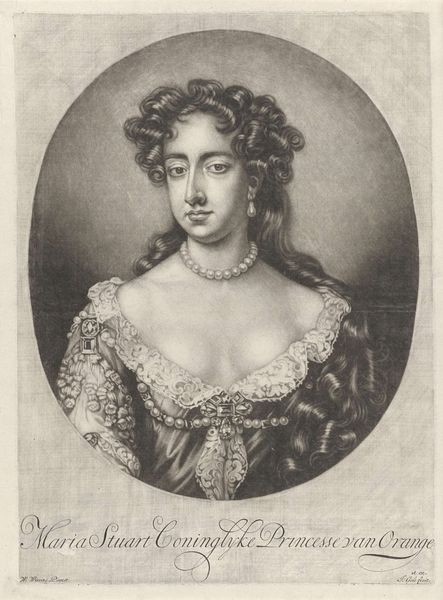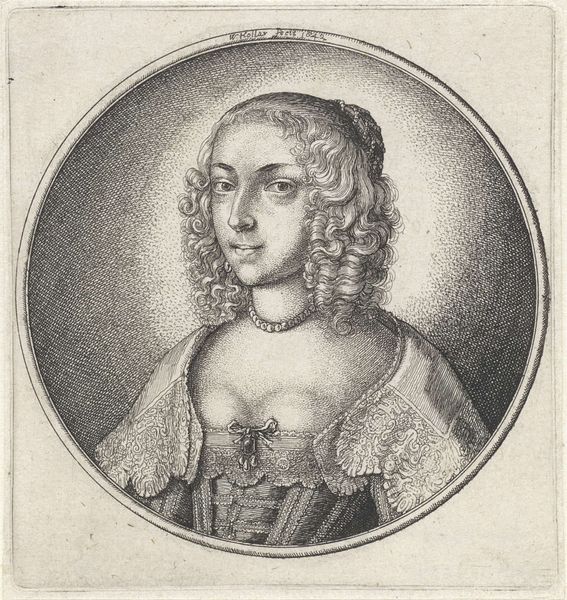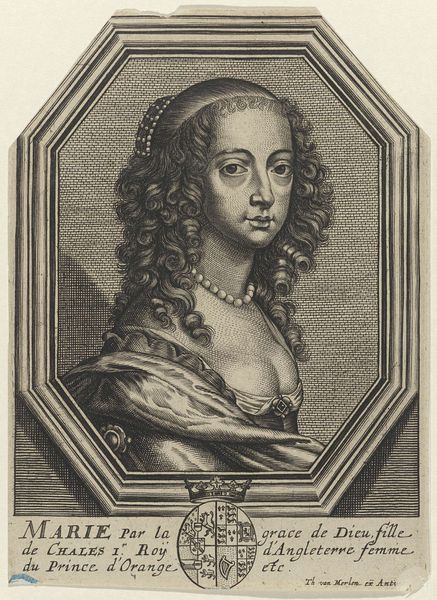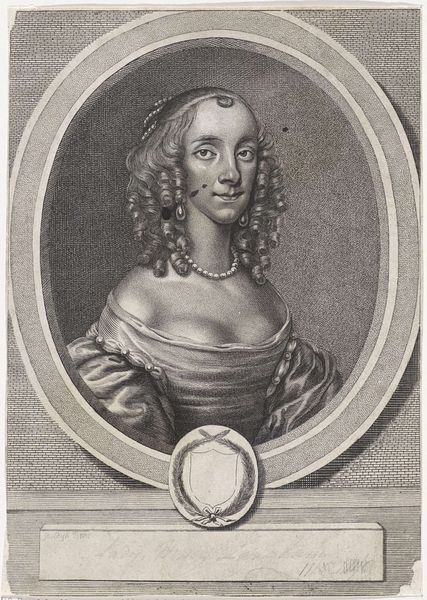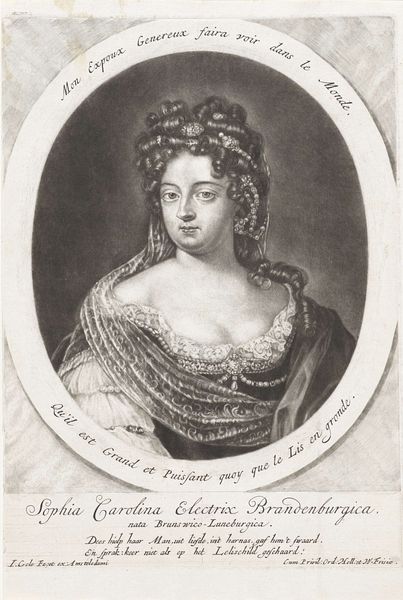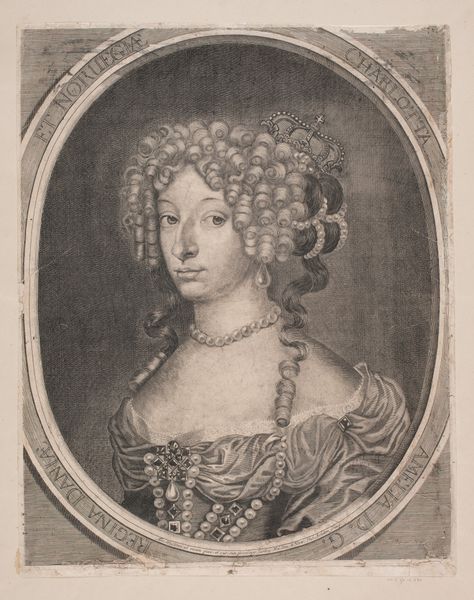
metal, engraving
#
portrait
#
baroque
#
metal
#
figuration
#
engraving
Dimensions: height 163 mm, width 115 mm
Copyright: Rijks Museum: Open Domain
Curator: This is a portrait engraving of Catharina van Braganza, Queen of England. The work dates from the period of 1619 to 1672 and is by Theodor van (II) Merlen. Editor: The crisp lines of the engraving give her a composed, almost severe expression, and yet there’s a playful quality too, with the cascading curls and decorative flower in her hair. It has an austere feel, with some Baroque sensibilities. Curator: Exactly. The use of Baroque elements softens what could have been a starkly formal representation. Her hair, styled in loose curls, and that single blossom, represent notions of femininity, perhaps meant to offset the power implied by the crown and coat of arms detailed below. Editor: I agree. Structurally, I notice how the octagonal frame mimics the shape of her face, subtly emphasizing her gaze. And the density of lines creates a play of light and shadow. It accentuates certain features while others blend into the background of uniformly etched, horizontal lines. Curator: Note also the strategic use of symbolism, as understood in the visual conventions of that time. For example, a flower of this size implies virtue and the youthful bloom of queenship. Also, the pearl earrings speak to the prosperity of her reign. Remember, portraiture was carefully constructed in the 17th century as visual propaganda. Editor: Certainly a far cry from contemporary portraits of royalty! Even the textual inscriptions contribute to a rigid hierarchy: Catharina D[ei]… Magna Britt[ania]…Hibernia Regina—Catharine, by the Grace of God…Queen of Great Britain and Ireland. Every detail reinforces her status. Curator: Reflecting upon this image, one sees the complex blend of personal representation with state power, something artists then always had to reconcile. Editor: I am struck by how, despite the visual rhetoric of Baroque and other artistic influences, the medium anchors this likeness firmly within its historical context. It presents a structured view, carefully constructed within very narrow aesthetic margins.
Comments
No comments
Be the first to comment and join the conversation on the ultimate creative platform.
